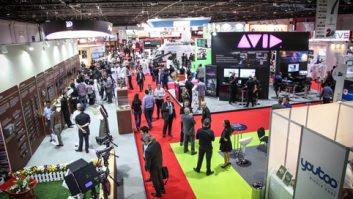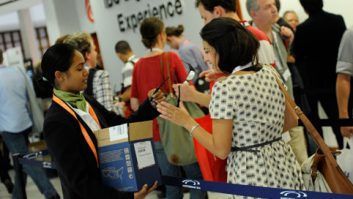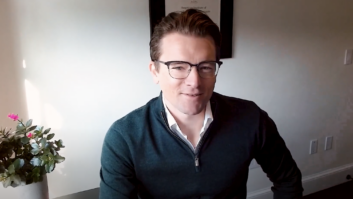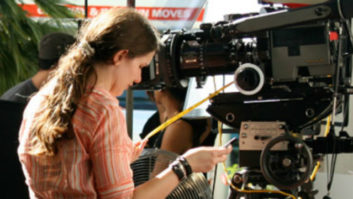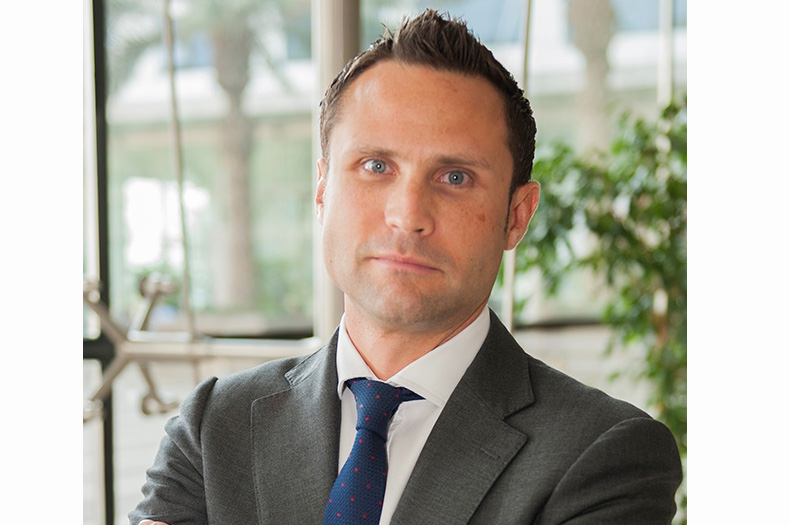
Entertainment and media spend in the Middle East and Africa (MEA) will reach $66 billion by 2018, according to a prediction by global analysts Pricewaterhouse Coopers. Cultural shifts, accelerated adoption of new media, and increased investment in technology have all contributed to significant changes in the region’s media, broadcast and entertainment industries. The annual CABSAT event returns to Dubai in March, providing a platform for discussion, networking, strategising and more. TVBEurope caught up with exhibitions director Andrew Pert, to find out more about the 22nd edition of the show.
What does your role as exhibition director involve?
Understanding the needs and un-met needs of our exhibitors, sponsors and target ‘buyer’ groups, to deliver an exclusive event experience by creating a unique mix of content programmes, networking opportunities, certified trainings, and meetings to drive future business opportunities
How long have you been working with CABSAT, and what are you most looking forward to at this year’s show?
This is my second edition of CABSAT, which will see us targeting the Middle East and North Africa (MENA) region’s broadcast, satellite and entertainment content professionals. We have an exhibition displaying 900+ brands from 100+ countries, allowing all electronic media professionals to experience the latest disruptive technologies in filmed and audio entertainment production.
A key focus is the Content Marketplace, CABSAT’s latest event launch. There will be showcases of filmed content for sale, formatting and co-production for the Arabic markets, and new strategies to monetise film, video and streamed media from global film and TV studios will be presented across three live show days – allowing all media professionals to find the most profitable techniques to create, manage and distribute their content.
Could you outline the recent changes in the broadcast and video industry in the MENA region, and the benefits and challenges these bring?
These are interesting times for the video industry in MENA. The consumer market is ripe for an increase in the distribution of HD TV channels and multiscreen video.
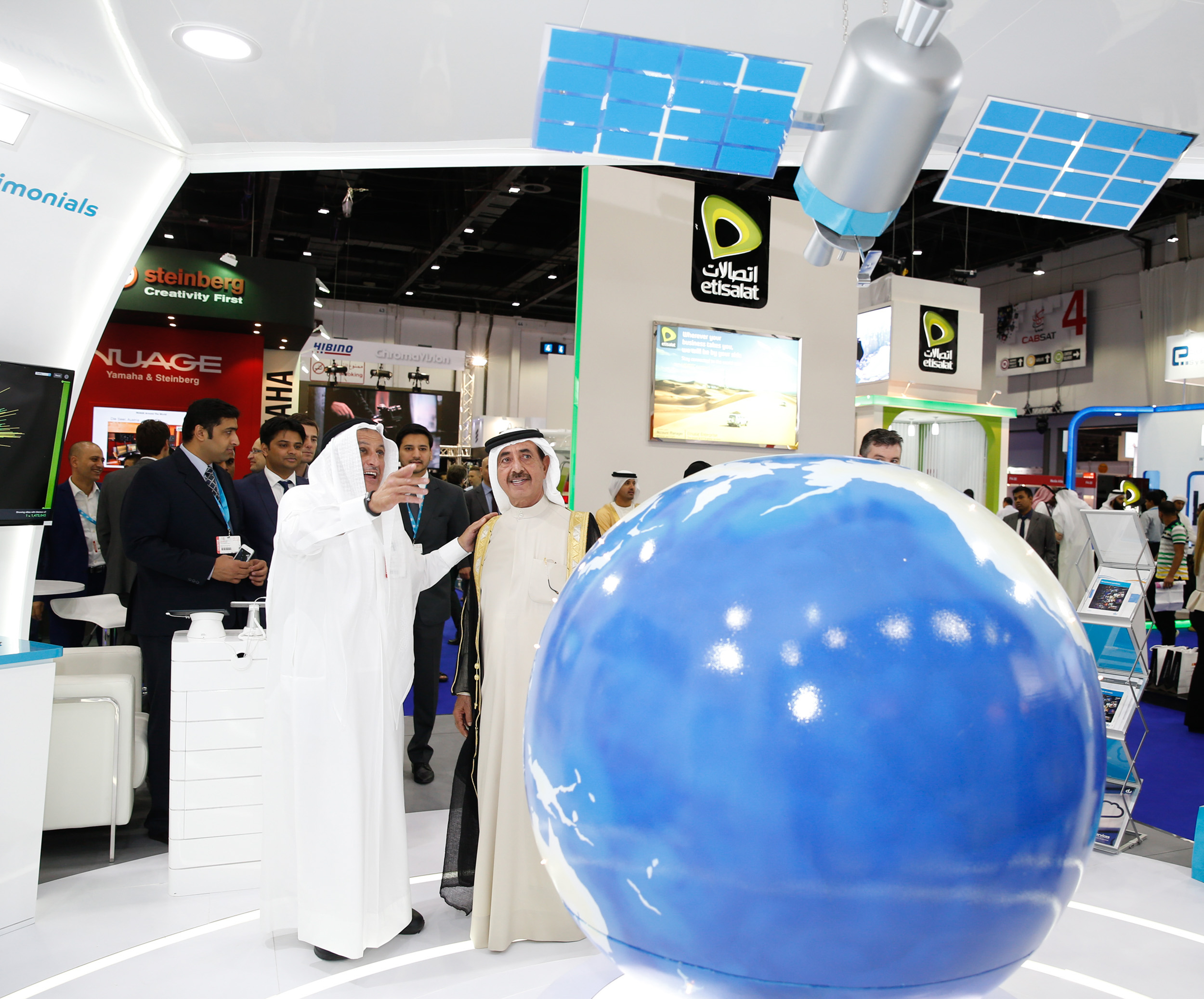
However, falling oil prices and inconsistent growth in advertising revenue are challenging for the broadcast industry. On one hand, while technologies have matured for adoption to drive new age content distribution, broadcasters and pay-TV operators are still struggling on structuring viable business models.
With a melting pot of a diverse expat population, the MENA region offers opportunities to international as well as local content producers to offer popular content. However, the market is highly fragmented and requires a deep-rooted understanding of the local ecosystem of content and technology partners.
For years, CABSAT has been a hot spot for networking for the broadcast, satellite and content delivery industries with people and companies who matter to the growth of the industry in MENA. With its dedicated focus in 2016 on both electronic media technology, products and solutions, and the content (through the co-located Content Marketplace event), it can be the fulcrum for new conversations, new initiatives and new technologies for the region that can help key stakeholders make informed decisions for profitable business growth.
Findings from our exclusively commissioned State of The Industry Reports through our knowledge partner, Frost & Sullivan, show that nearly 60 per cent of TV households in MENA have HDTVs and more than half have HD satellite TV receivers. Eighty-five per cent of TV households in GCC [Gulf Cooperation Cou ncil] alone have HDTVs and HD receivers. However, fewer than a quarter of channels available in the region are transmitted in HD.
High-definition is becoming a way of life across MENA. The difference between luxury and premium is fast blurring in the way consumers perceive and purchase products. The growing HD footprint in the region is a positive sign for broadcasters to take their transmission to the next level. In order to maintain their competitive edge, they will need to respond to expectations of high quality user experience and push out more and more HD content.
2016-2018 will see large scale disruptions in the media industry, breaking traditional boundaries of businesses as well as pricing. There will be more choice for pay-TV subscriptions and competition will intensify as international companies jostle side by side with regional players for air time and consumer mind space or binge viewing time.
What will visitors gain from visiting CABSAT 2016, and what is new to the show this year?
CABSAT will deliver a hybrid showcase of new technologies and exclusive content for sale for the Arabic market.
All those media professionals looking to test, experience, research or purchase a specific product or service over the coming months will find the right solution for their projects by using our many event tools including our business matchmaking programmes. Plus, for those attending the show for education or to keep up with future industry trends or developments, there is a suite of content-led show features to register for. These include the Content Congress themed around the future of television in a connected world; a post production certified Apple and Adobe training conference; and plenty of free learning opportunities at the Content Delivery Hub and the GVF Satellite Hub Summit.
OTT and IPTV are relatively new options in the MENA region; what kind of innovations in these areas do you expect to see at CABSAT this year?
OTT and IPTV continue to disrupt the traditional distribution models of content to the MENA region consumers.
New solutions and formats are being launched, including Etisalat announcing its partnership with Huawei to introduce the first ultra-high definition 4K IPTV service in the MEA region, and Omante’s launch of Omantel TV+, its IPTV service, which will enable viewers to watch more of what they want when they want to watch it.
With Netflix’s recent launch into the region, more partnerships between telcos and premium content providers are expected to be announced; OTT and IPTV are set to define the future of filmed entertainment consumption.
With this in mind, we’re delighted that CABSAT will offer a unique opportunity to hear how leading players including Netflix, Dreamworks, Sony Pictures and Starzplay are creating film and TV entertainment content for the next anytime anywhere viewing content generation.
How will the Content Congress address the theme of ‘the future of television in a connected world’ and who are your speaker highlights?
The Content Congress’ aim has been to gather a wish list of industry visionaries and trend-setting companies at the forefront of the disruptive digital broadcasting revolution. This multi-faceted Congress presented by CABSAT, Content Marketplace and NAB Show, will accelerate CABSAT’s credentials as the region’s leading industry platform for electronic media companies to better understand innovative, best-practice business strategies, and to evolve their products for the benefit of viewers and consumers.
Under the Congress theme – ‘The future of television in a fully connected world’ – the two-day congress will see international and regional industry experts speaking from across broadcasting, studios and production houses, telcos, film and content delivery players including:
Glenn Gainor, executive producer, Sony Pictures Entertainment
Ashi Seth, manager enterprise platforms, Netflix
Eric Ellenbogen, co-head, Dreamworks
Maxine DeVere, producer, Fast and Furious
Jonathan Tuovinen, director format sales and production, NBC Universal
CABSAT runs from 8-10 March at the Dubai World Trade Centre
